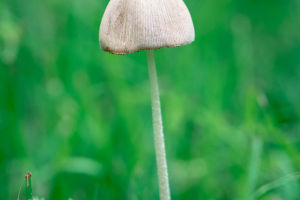Tulips are one of the most beloved spring flowers, admired for their vibrant colors and elegant shapes. While they are relatively easy to grow in gardens, cultivating tulips in pots can be more challenging. Often, potted tulips fail to bloom, leaving gardeners frustrated.
Understanding the specific needs of tulips and the conditions required for their growth is crucial. Here are six essential conditions that, if not met, can prevent potted tulips from blooming.
1. Proper Chilling Period
Tulips require a period of cold dormancy to bloom. This chilling period mimics the winter season, which is necessary for the bulbs to break dormancy and initiate flowering. If tulip bulbs are not exposed to temperatures between 35°F and 48°F (1.5°C to 9°C) for at least 12-16 weeks, they may not bloom. When growing tulips in pots, ensure that the bulbs are chilled properly before planting. This can be done by refrigerating the bulbs (away from fruits that emit ethylene gas) or storing the potted bulbs in a cool garage or basement during the winter months.
2. Adequate Sunlight
Tulips need plenty of sunlight to bloom. They require at least 6 hours of direct sunlight each day. Insufficient light can lead to weak growth and a lack of blooms. When placing potted tulips, choose a location that receives full sun. South-facing windowsills or outdoor spots that get ample sunlight are ideal. If grown indoors, rotating the pot periodically can help ensure that all sides of the plant receive equal light exposure.
3. Correct Planting Depth
The depth at which tulip bulbs are planted is critical. If bulbs are planted too shallow, they may not develop properly, leading to poor flowering. Conversely, if they are planted too deep, they may struggle to emerge. The general rule of thumb is to plant tulip bulbs at a depth of three times their height. For most tulip bulbs, this translates to about 6-8 inches deep. Ensure that the pointed end of the bulb faces upwards and cover it with soil gently, avoiding excessive compaction.
4. Proper Watering Practices
Watering can be a tricky balance with potted tulips. Overwatering can lead to bulb rot, while underwatering can cause the bulbs to dry out and fail to bloom. After planting, water the bulbs thoroughly to settle the soil. Thereafter, keep the soil moist but not soggy. During the chilling period, reduce watering to prevent rot. As the bulbs begin to grow in the spring, increase watering slightly, ensuring that the soil remains consistently moist. Proper drainage is also essential, so make sure the pots have drainage holes to prevent waterlogging.
5. Nutrient-Rich Soil
Tulips thrive in well-draining, nutrient-rich soil. Poor soil conditions can lead to weak plants and insufficient blooming. When planting tulips in pots, use a high-quality potting mix that contains organic matter. Adding a balanced, slow-release fertilizer can provide the necessary nutrients throughout the growing season. Avoid using garden soil as it may compact in pots and hinder drainage. Replenishing the soil annually or after each growing season can also help maintain the nutrient levels required for healthy tulip growth.
6. Pest and Disease Management
Pests and diseases can severely impact the blooming of potted tulips. Common issues include fungal diseases like Botrytis blight, bulb rot, and pests such as aphids and bulb mites. Regularly inspect the plants for signs of trouble. Use fungicides or natural remedies to combat fungal infections and consider using insecticidal soap for pests. Proper sanitation, such as removing dead leaves and debris from the pot, can also help prevent the spread of diseases. Ensuring good air circulation around the plants can further reduce the risk of fungal infections.
Growing tulips in pots can be a rewarding experience, provided their specific needs are met. By ensuring a proper chilling period, adequate sunlight, correct planting depth, proper watering practices, nutrient-rich soil, and effective pest and disease management, you can increase the chances of your potted tulips blooming beautifully. Attention to these six conditions will help transform your potted tulips from dormant bulbs into stunning floral displays, bringing vibrant colors and joy to your indoor or outdoor spaces.


